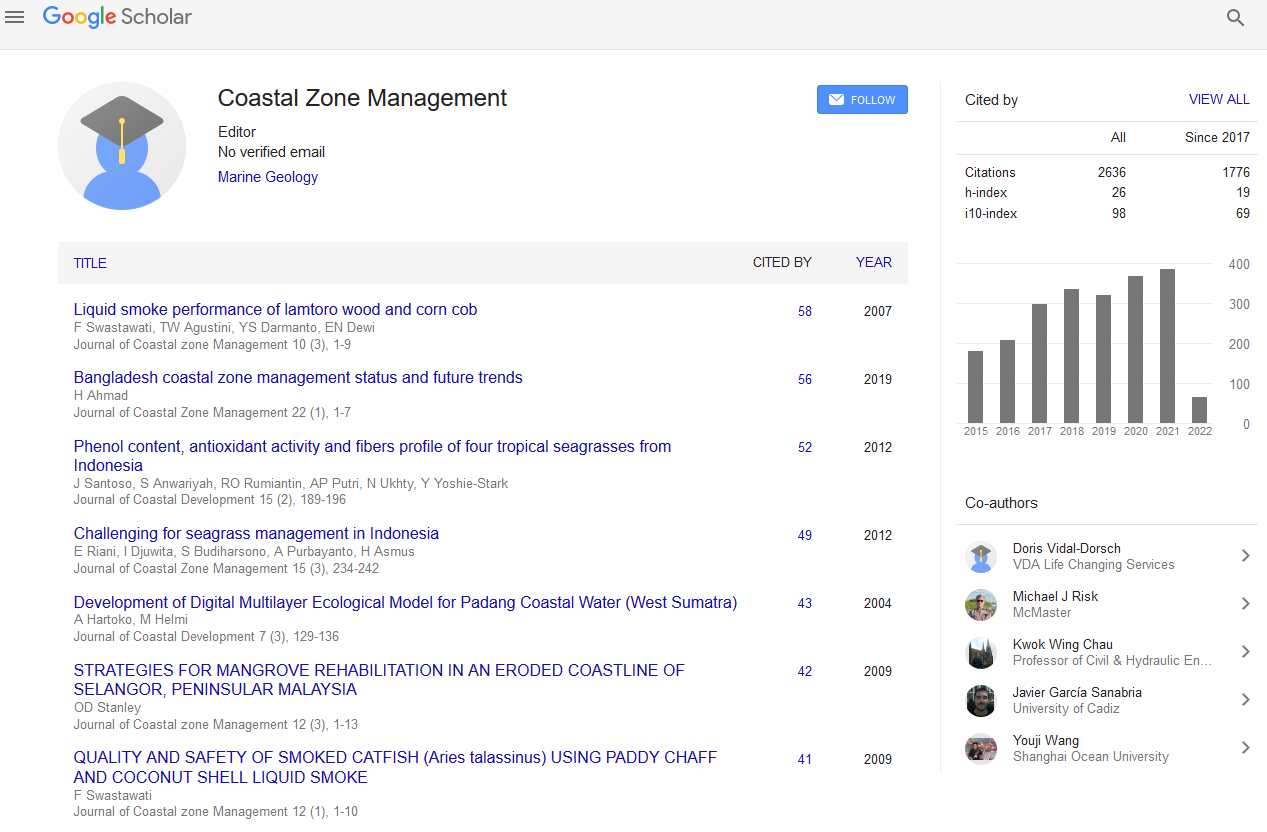Indexed In
- SafetyLit
- RefSeek
- Hamdard University
- EBSCO A-Z
- OCLC- WorldCat
- Publons
Useful Links
Share This Page
Journal Flyer

Open Access Journals
- Agri and Aquaculture
- Biochemistry
- Bioinformatics & Systems Biology
- Business & Management
- Chemistry
- Clinical Sciences
- Engineering
- Food & Nutrition
- General Science
- Genetics & Molecular Biology
- Immunology & Microbiology
- Medical Sciences
- Neuroscience & Psychology
- Nursing & Health Care
- Pharmaceutical Sciences
Abstract
Possibilities to Increase Carbon Sequestration in Forest Ecosystems Through Biochar Soil Application
Martyna Zywalewska
In the last years, interest of natural fertilizers has increased, their production, form and potential. At the same time from year to year growth harvested annually of forest, at a whole of world. Therefore, more and more research is being conducted which reports on the increasing potential of using biochar in agricultural production systems, as natural fertilizer. Growing problems of environmental protection related to progressive soil degradation, intensifying effects of climate change, energy production and waste management require the search for new, more effective and cheaper solutions. One of the proposed solutions to current problems in the area of environmental protection is biochar, i.e. carbonate obtained in the process of pyrolysis of plant biomass and organic waste. Biochar and its use is not a new solution - it has been used in agriculture for centuries. However, in recent years its properties and potential applications have been rediscovered and it can now be concluded that the traditionally known carbonate, in response to modern needs and applications in the field of environmental protection, has gained a new "brand" and functions as a biochar. Substrates for the production of biochar include a diverse group of materials, which include: energy crops, forest waste, agricultural biomass, sewage sludge, organic fraction of municipal waste or residues from agri-food processing. The choice of substrates depends, among others on physicochemical properties (e.g. water and organic matter content, particle size), potential applications (e.g. for energy production, agricultural purposes, for removing contaminants), logistics aspects and the pyrolysis process and its parameters. Biochar due to such physicochemical properties as high content of organic carbon in stable form and mineral substances, significantly developed porosity and specific surface, can be successfully used: in bioenergetics as a renewable fuel; for carbon sequestration in soil; in the composting process as a structural material or additive limiting ammonia emissions; in the production of organic fertilizers based on biochar; to improve the properties of agricultural land; for removing impurities from aqueous solutions, municipal and industrial wastewater, and process gases; in the remediation of soils contaminated with organic and inorganic compounds, and to reduce pollution of groundwater and surface waters through the retention of e.g. biogenic components in soil.
The use of biochar in environmental protection brings many benefits, including such as the possibility of replacing fossil fuels with a renewable fuel, improving soil properties, e.g. increasing the amount of carbon in the soil or water capacity of the soil, reducing the consumption of organic and inorganic fertilizers and plant protection products, and thus the risk of ground and surface water pollution. Despite the many benefits identified, biochar production and its introduction into the environment can also pose some risks. They may concern, among others intensive biomass extraction from crops, and thus lead to soil degradation, the introduction of toxic compounds, e.g. PAH, dioxins and furans, into the soil environment, which negatively affects living organisms and can lead to groundwater pollution. Moreover, the physicochemical properties of biochar obtained from various substrates, as well as processes and mechanisms of long-term impact on the natural environment, have not yet been fully understood. Further research directions should therefore include, among others developing a biochar classification system obtained from different substrates based on their physicochemical properties and application criteria, analyzing the possibilities of optimizing the parameters of the pyrolysis process to obtain the desired biochar properties for various applications in environmental protection, assessing the impact of biochar on the natural environment in the long term, determining occurrence of potential introduction hazards biochar to the environment, analysis of the cost of biochar production and the availability of substrates useful for its production, and the cost of using biochar, e.g. for energy production, remediation of contaminated land, improvement of soil properties or removal of pollution from municipal and industrial wastewater.
Biochar is very interesting material which can provide for future forest more substitutes and help them grow faster, bigger and cover good conditions for growing. However, little is known about the impact of biochar, especially in form of hydrochar. This work paper aims to reviewing information and known facts about the effect of the use of biochar in breeding seedlings. Biochars in many paper have been proposed as novel materials for providing soilless growth media. However, is need to remember than much more knowledge is required before reliable advice can be given, to use these material as fertilizers in case of forests. In a production technology of biochar, depends on which process were applied, phytotoxicity and greenhouse gas emissions have been found for certain chars. I studied how these chars affected substrate characteristics, plant performance, water economy and respiratory CO2 emission. However, biochar is much recommended in agriculture production, to help provide higher yield
Published Date: 2020-10-20;

